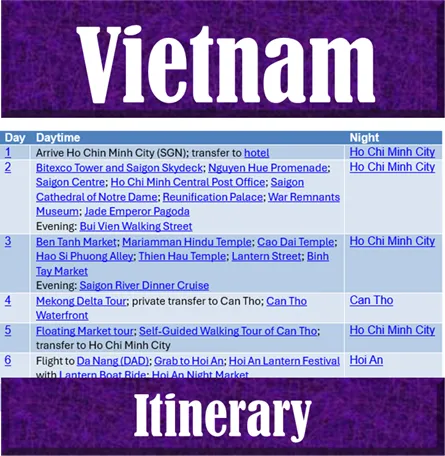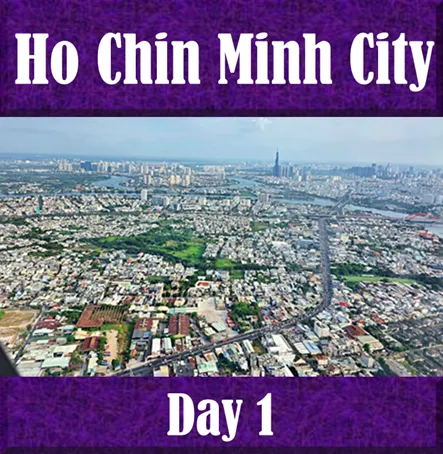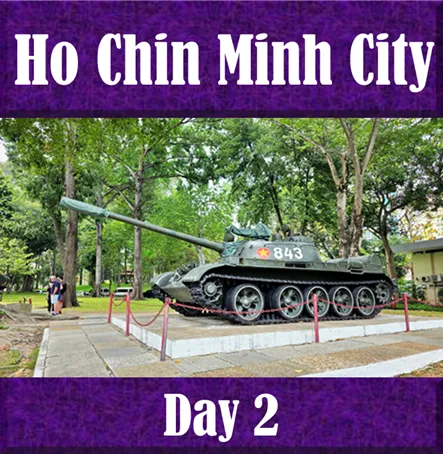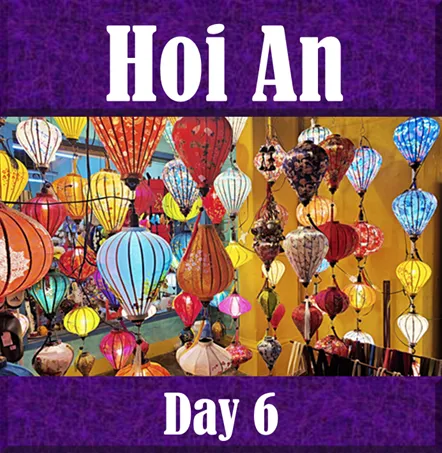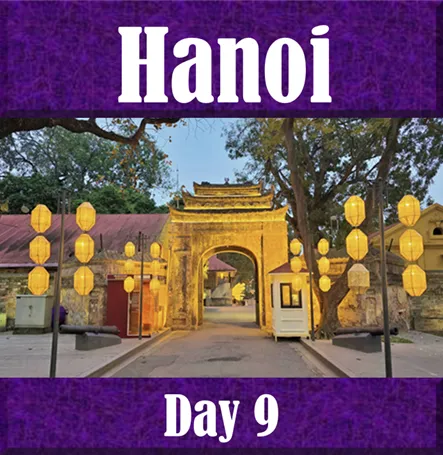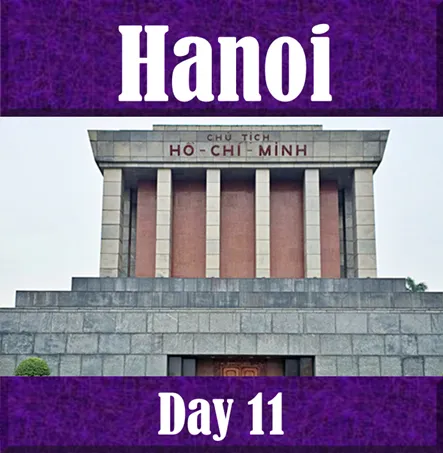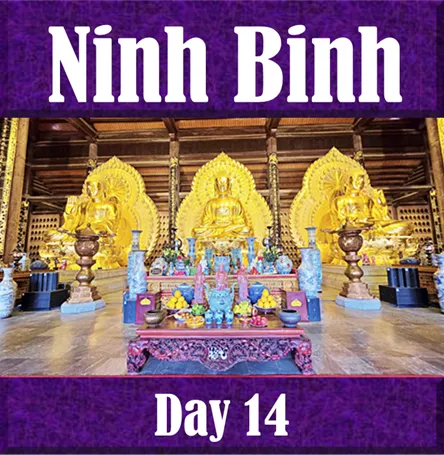Cantonese Assembly Hall: Hoi An's Temple of Quan Cong & Dragon Courtyard | Vietnam Purple Travel Guide
(map, reviews)
This is Premium Content! To access it, please download our
Backpack and Snorkel Purple Travel GuideTo enter, you need to have purchased the Hoi An Ancient Town Ticket.
Make the Cantonese Assembly Hall (Quang Trieu Assembly Hall) your first stop in Hoi An Ancient Town. It is one of the town’s most ornate and historically significant landmarks.
If the limitation of one Assembly Hall per ticket is still in place when you visit, then you may want to either skip it and visit the fantastic Fukian Assembly Hall, or buy another ticket.
The Cantonese Assembly Hall is 19th-century heritage site, which was built by the local Cantonese Chinese community, blends traditional Chinese architecture with rich cultural symbolism and spiritual purpose.
A Historic Meeting Place of the Cantonese Diaspora
The Cantonese Assembly Hall was established in 1885 by Chinese merchants from Guangdong (Canton) who had settled in Hoi An—then a flourishing international port. Assembly halls like this served multiple purposes: they were places of worship, community meetings, and cultural support centers for Chinese expatriates.
The hall was originally dedicated to Thien Hau, the goddess of the sea, who protects sailors and merchants. Later, it was also dedicated to Quan Cong (Guan Yu), a Chinese general revered as a symbol of loyalty, integrity, and righteousness. His statue is enshrined in the main altar and is a focal point of veneration.
Here are some photos that we took:
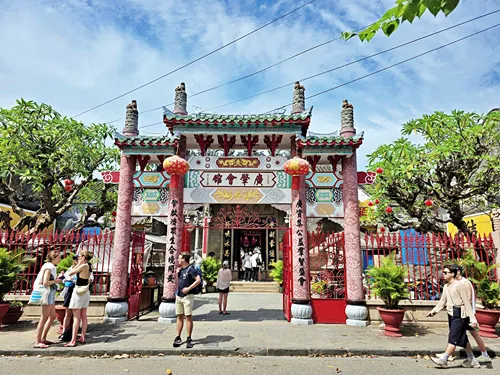
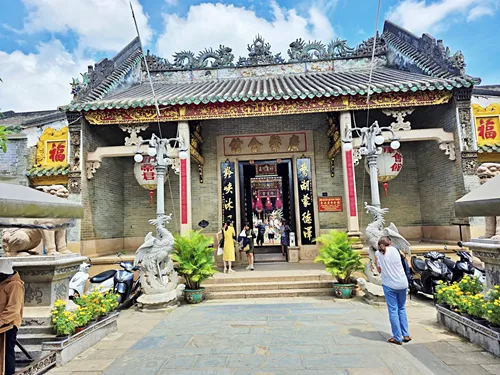
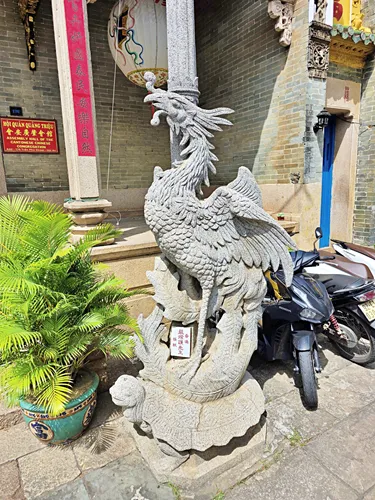
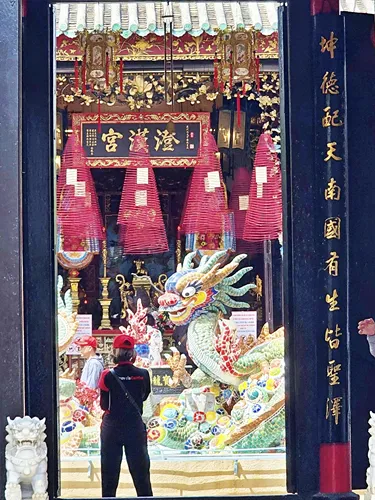
Architecture and Symbolism
The Cantonese Assembly Hall is a stunning example of classical Chinese architecture with strong Southern Chinese influences. It features a richly decorated three-gate entrance, intricate wood carvings, ceramic mosaics, and dragon statues that symbolize strength and protection.
Upon entering, visitors are greeted by a lush courtyard filled with bonsai trees, incense coils, and statues of mythical animals such as dragons, phoenixes, and qilins. The dragon mosaic at the fountain in the courtyard is especially photogenic and symbolic, as dragons are believed to bring prosperity and good fortune.
Inside, the main hall houses altars to Quan Cong and other deities, surrounded by elaborate artwork, incense burners, ceremonial weapons, and hanging lanterns. The details reflect a blend of Taoist, Confucian, and Buddhist iconography, showcasing the syncretic religious beliefs common among Chinese diaspora communities.
Cultural Significance Today
Though fewer Chinese families live in Hoi An today, the Cantonese Assembly Hall remains an active place of worship and cultural pride. It also plays a role in annual festivals, especially during Tet (Lunar New Year) and the Hoi An Lantern Festival, when it is beautifully illuminated and visited by both worshippers and tourists.
As part of Hoi An’s protected UNESCO heritage zone, the hall is preserved not only as a tourist attraction, but also as a symbol of the town’s historical role as a cultural crossroads between Vietnam and the wider Asian world.
Travel Tips
Entry is included in the Hoi An Ancient Town ticket, which provides access to several heritage sites.
Photography is allowed, but be respectful of worshippers and avoid using flash near altars.
Open daily from around 7:00am to 5:30pm at the time of writing.
Here at Backpack and Snorkel Travel Guides, we promote self-guided walking tours.
But we realize that not everybody likes to walk by themselves in a foreign city. So, just in case that you rather go with ab guide: NO PROBLEM! Please see the Viator tours below.
paid Viator tours
Where do you want to go now?
Author: Rudy at Backpack and Snorkel
Bio: Owner of Backpack and Snorkel Travel Guides. We create in-depth guides to help you plan unforgettable vacations around the world.
Other popular Purple Travel Guides you may be interested in:
Like this Backpack and Snorkel Purple Travel Guide? Pin these for later:





